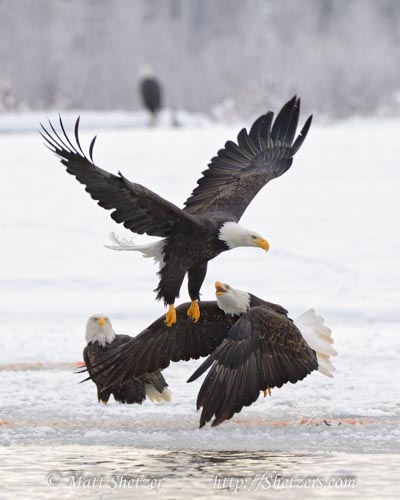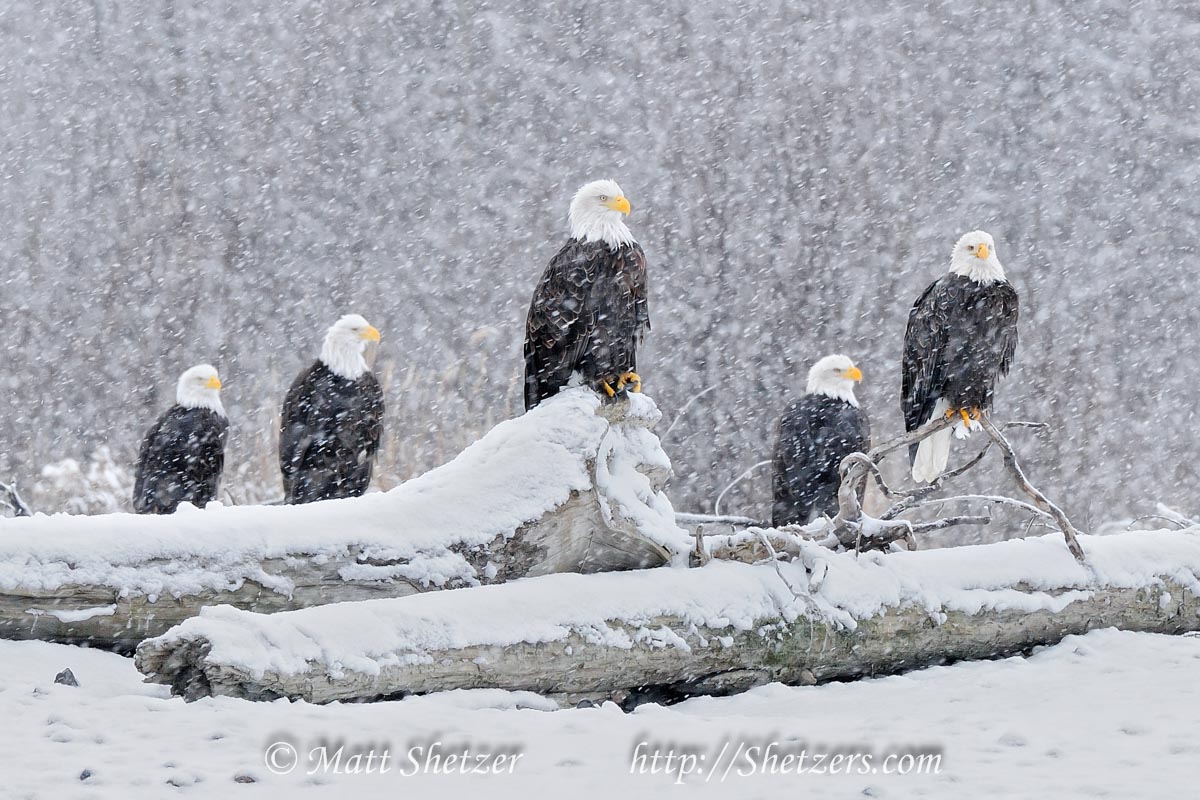We are going to discuss two items about photographing in the snow in this article.
- Proper Exposure
- Creating a Mood with Falling Snow.

Bald Eagles fighting over salmon on the snowy banks of the Chilkat river in Alaska
Proper Exposure
Lets first start out with proper exposure. Our cameras are designed to photograph some scenes very well, snow is not one of these. By default, a camera will set the exposure for the scene to be middle grey, or 18% grey. This works great for a scene with lots of green grass, or pretty blue skies.
In order to capture white snow (and not grey snow) we need to over expose the scene to tell the camera we are taking a picture of something brighter than middle grey. Typically 1.5 to 2 stops over exposed does the trick. Each camera is a little different so you will want to experiment with this value. Make sure you check your RGB Histogram, and try to push the pixels to the furthest right without clipping. READ OUR PHOTO TIP ABOUT HISTOGRAMS if you need help with this.
To achieve this over exposure, we can use the exposure compensation button (little +/- on most cameras with a dial wheel). Start out at +1 1/2 exposure compensation, and take a test shot of the scene with snow. Check your histogram, make any changes to the exposure compensation and test again. Thats it !!! Remember to set your exposure compensation back to zero when you are done with your snowy scenes.
Creating a Mood with Falling Snow
One of my favorite subjects to photograph is bald eagles in the falling snow. Photographing in the falling snow really adds to the fun as you can create your images with either soft blurry snow, little tiny sharp flakes, or something in between.
The image below was shot at 1/125 second at F/11.
The 1/125 provided the softness I was looking for, adding a texture to the scene, and the F/11 provided a lot of depth of field. By adding a lot of depth to a snowy scene, you are getting more snow flakes in focus, and less blurry ones.
Now you have to sit and wait for 5 bald eagles to look the same way during next years Bald Eagle Photography Workshop.

Normally solitary animals, these bald eagles congregate along a river bank in snowy Alaska.
Each snowy day is a little unique as the snow flakes are different sizes and falling at different rates. I would recommend shooting a bracket of images from 1/40 sec to 1/250 sec shutter speed. When you get home, pick your favorite image, print it big, and hang it on he wall.
Don’t forget to cover your camera for these snowy days, and get out there and have a great time creating memorable images of a lifetime !
